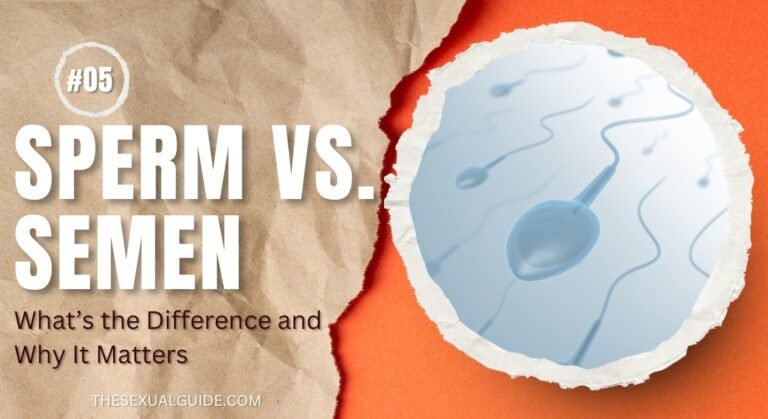Orgasms have long fascinated scientists and laypeople alike, not only for the pleasure they provide but also for their potential evolutionary roles.
The Male Orgasm: More Than Just Pleasure, Its Role in Reproduction
In males, the purpose of orgasm is relatively straightforward.
Orgasm is typically accompanied by ejaculation, facilitating the release of sperm and increasing the likelihood of fertilization.
This direct link between orgasm and reproduction underscores its adaptive significance in ensuring the continuation of the species.
The Female Orgasm: A Subject of Debate
The role of the female orgasm is more complex and has been the subject of extensive research and debate. Several hypotheses have been proposed:
1. Byproduct Hypothesis
Some researchers suggest that the female orgasm is a byproduct of shared embryonic development with males.
Just as males and females both develop nipples, the structures necessary for orgasm may develop in females without serving a direct reproductive function.
This perspective posits that the female orgasm does not have an adaptive evolutionary role but exists because of the shared developmental pathways between sexes.
2. Mate-Choice Hypothesis
Another theory proposes that female orgasms evolved to promote selective mating.
Experiencing orgasm may encourage females to choose mates with desirable genetic traits, thereby enhancing offspring fitness.
This hypothesis suggests that orgasm increases the probability of fertilization from males whose genes would improve offspring viability.
3. Facilitation of Sperm Retention
It has been proposed that the muscular contractions during a female orgasm help retain sperm, increasing the chances of conception.
These contractions might assist in drawing sperm into the cervix, thereby facilitating fertilization.
However, empirical support for this hypothesis is limited, and more research is needed to confirm this function.
4. Pair-Bonding Hypothesis
The release of oxytocin and other bonding hormones during orgasm may strengthen emotional connections between partners.
This enhanced bond could lead to increased cooperation in raising offspring, thereby improving their chances of survival.
This hypothesis emphasizes the role of orgasm in social bonding and cooperative parenting.
Orgasms and Overall Health
Beyond reproductive considerations, orgasms have been linked to various health benefits:
- Stress Reduction: The release of endorphins during orgasm can alleviate stress and promote relaxation.
- Improved Sleep: Post-orgasm, the body often experiences a state of relaxation conducive to better sleep.
- Pain Relief: Orgasms can trigger the release of natural painkillers, providing relief from headaches and other discomforts.
- Enhanced Mood: The surge of neurotransmitters like serotonin during orgasm can improve mood and overall well-being.
These health benefits suggest that orgasm plays a role in maintaining physical and mental health, which could indirectly support reproductive success by keeping individuals healthy and capable of caring for offspring.
Conclusion
While the male orgasm’s evolutionary purpose is closely tied to reproduction, the role of the female orgasm remains a complex and debated topic.
Various hypotheses highlight its potential functions in mate selection, sperm retention, and pair bonding.
Additionally, the health benefits associated with orgasms underscore their significance in human well-being.
For individuals experiencing challenges such as erectile dysfunction (ED), understanding these aspects of sexual health is crucial.
For trusted solutions and more information, consider visiting LibidoDepot.
Want to learn more? Visit LibidoDepot for trusted solutions.
FAQs on the Evolutionary Purpose of Orgasms
What is the evolutionary significance of orgasms in humans?
Researchers have proposed various theories regarding the evolutionary role of orgasms. In males, orgasms are directly linked to reproduction through ejaculation. In females, some hypotheses suggest that orgasms may have historically played a role in inducing ovulation or enhancing mate selection, though their exact evolutionary function remains a topic of ongoing research.
Is the female orgasm considered an evolutionary adaptation or a byproduct?
There is debate among scientists about whether the female orgasm is an adaptation with a specific evolutionary function or a byproduct of male orgasm. Some researchers argue that it may have evolved to aid in mate selection or pair bonding, while others view it as a vestigial trait without direct reproductive benefits.
How does the 'pair-bonding' hypothesis relate to the female orgasm?
The 'pair-bonding' hypothesis suggests that female orgasms may promote emotional bonding between partners through the release of hormones like oxytocin, potentially enhancing long-term partnership stability, which could be beneficial for cooperative child-rearing.
What is the 'sperm retention' theory concerning female orgasms?
The 'sperm retention' theory posits that female orgasms may facilitate the retention and transport of sperm within the reproductive tract, potentially increasing the likelihood of fertilization. However, empirical support for this theory is limited, and it remains one of several competing hypotheses.
References
- A brief natural history of the orgasm
- Why women have orgasms: an evolutionary analysis
- Orgasm and evolution
- The Effect of Female Orgasm Frequency on Female Mate Selection
- An Evolutionary Perspective on Orgasm
- Orgasm






